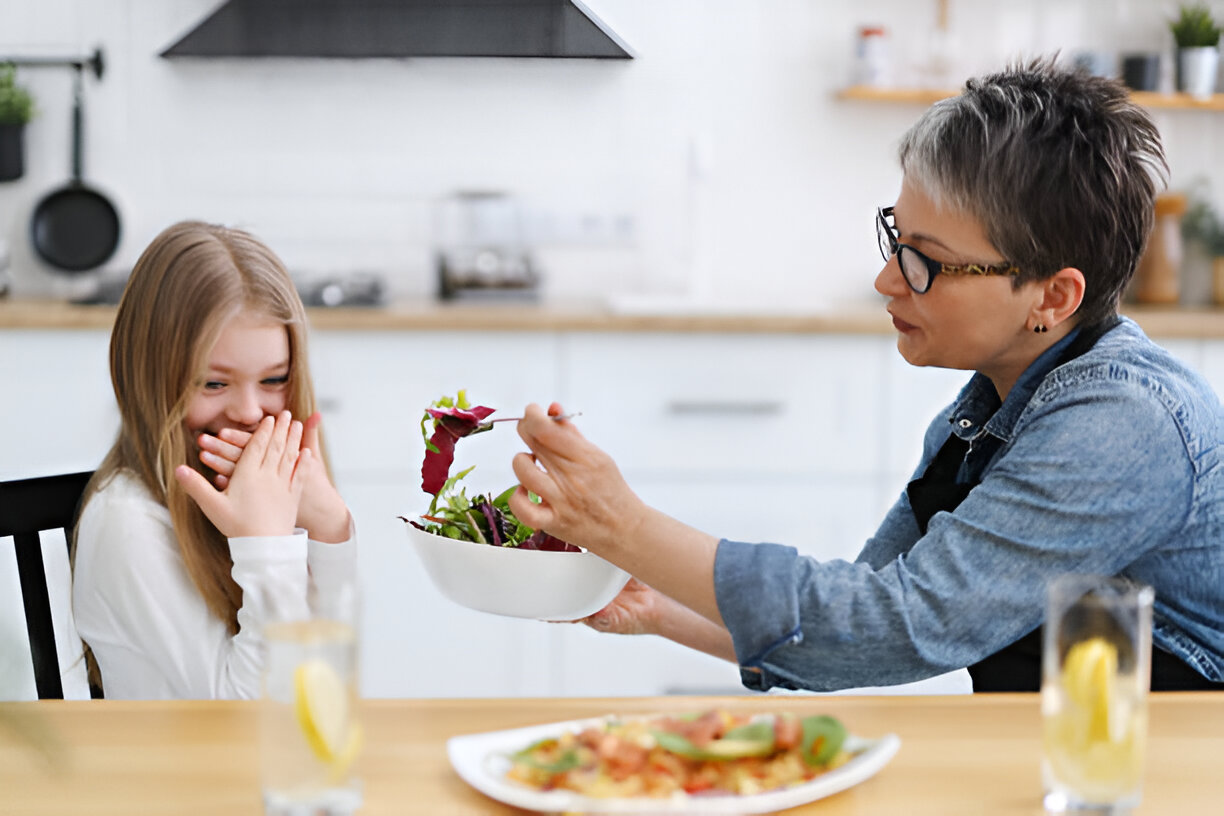1. Emotional Cues Drive Kids’ Dislike for Healthy Food
Kids’ Food Preferences Tied to Psychology
Why Kids Hate Healthy Food examining food psychology reveals how nutrition affects kids’ behavior and influences what they eat and think about eating. Despite parents’ efforts to feed their children healthy fruits, vegetables, and grains, these dietary staples often trigger self-defense reactions in young eaters.
The brain reacts strongly against nutritious foods through basic tastes, built-in preferred flavors, and social influences. This creates many mental obstacles to eating what’s good for us.

Kids’ Taste Buds Resist Earthy Vegetables
Strong taste receptors contribute primarily to children’s dislike of nutritious food. Because kids have keener taste buds than adults, their preference is against vegetables that taste bitter, such as spinach, broccoli, or kale. Our bodies instinctively react to this sense because humans once needed to detect plants that could harm them.
Marketing Influences Kids’ Food Choices
Business tactics create more problems when kids reject healthy food because of additional stress on their minds. Companies use animated characters, vibrant packaging, and upbeat sounds to attract young customers to their unhealthy snack offerings.
Parental Pressure Breeds Resistance in Kids
When parents force healthy eating, kids may resist those foods. When parents force their children to eat vegetables or forbid junk food, they create unhealthy connections to these foods by making eating a bothersome requirement. Our built-up dislike for healthy foods develops with continued pressure from this behavior.
Kids develop negative connections toward vegetables and fruits because these foods make them feel controlled by their parents. The constant struggle over food makes kids feel pessimistic about eating healthy items. Pushing your kids to eat better will make them defend their food preferences even harder and drain energy from everyone in the household.
Peer Pressure Shapes Children’s Choices
Social connections significantly affect our understanding of why children reject nutritious meals. The choices made by kids’ school friends about meals and what’s trendy hold more power over them than parents expect. A child eats carrot sticks with hummus while peers eat chocolate candy and drink colorful sodas, making them uncomfortable.
Children pay strong attention to their social groups while tying their food choices to these bonds. Many kids feel separated from others when they refuse to eat processed snacks and instead eat whole foods. When kids think judged by their food choices, they naturally avoid eating healthily.
Instant Enjoyment Drives Kids to Junk Food
Our preference for fast satisfaction makes us decide against nutritious food choices. Eating junk food immediately feels good through the taste and sensation of its texture. Eating crispy chips with carbonated drinks and candy activates the brain’s pleasure system before cooking broccoli.
Young minds cannot understand how eating vegetables and whole grains today will make them healthier later in life. To them, the quick energy of sweets feels better than the more gradual benefits of wholesome food choices. Kids reject healthy food because their natural preference is for fast gratification.

Educating Children on Nutrition
Children will eat healthier when they understand how good nutrition makes them stronger. Children want to learn, so giving basic facts about how nutritious food helps their bodies work better motivates them to try new foods.
Schools should teach nutrition knowledge by providing educational programs and practical gardening experiences. Showing children the complete journey of food development from farm to meal helps them understand healthy eating clearly and positively.
Balancing Preferences and Healthy Options
People need to learn to eat healthy food alongside their usual food choices. Instead of completely forbidding unhealthy snacks, parents should use portion control to introduce more nutritious alternatives.
When you offset new healthy foods with favorite meals, your children know they make it easier to accept them. When kids study new food tastes, they understand best when adults mix these new flavors with familiar favorites, such as adding cheese to broccoli and serving apples with peanut butter.
Overcoming Psychological Barriers
The main reasons children reject healthy food are their thoughts about food, social expectations, and what they like to eat. Parents and caregivers need time, patience, and innovative solutions to change food habits.
Families create strong eating habits through their good examples while offering guilt-free food choices and always having healthy items available for their children. Children can learn to eat more nutritious choices during eating challenges through steady practice and mental support.
Reshaping Attitudes Toward Healthy Eating
Helping children understand healthy food goes beyond their meals to influence their attitudes toward food through their eating experiences.
By understanding children’s feelings about healthy food and finding new ways to make it enjoyable, adults can help establish long-term habits that improve kids’ health and happiness. Each tiny stage your children take toward a healthy diet brings them closer to better health.
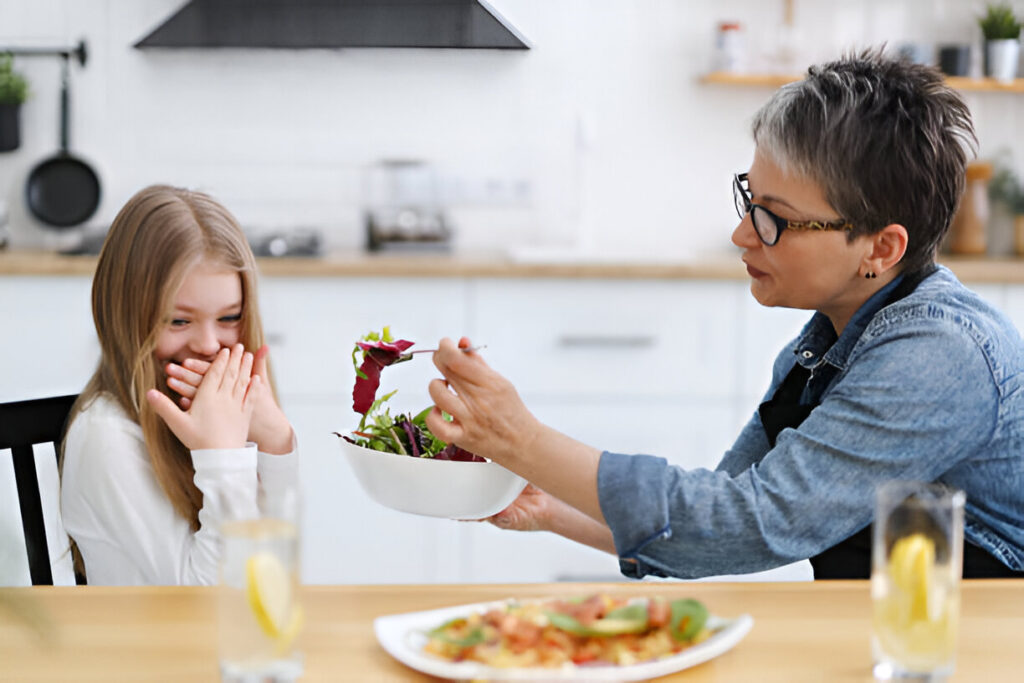
2. What you prefer to see and taste decides which foods you want to eat
Your food preferences decide what you eat
What you eat depends on factors beyond your stomach’s food needs, including visual appeal and taste. Children establish their preferred food options mainly based on product appearance and taste.
Food choices reveal why kids avoid healthy options through their strong preference for how food looks and tastes. Food companies market visual appeal and flavor more successfully than they promote healthy meal options, even when packed with nutrition.
Our Selection of Food Depends Mainly on What We See
The way food looks strongly shapes people’s food choices. Kids quickly notice bright-colored and unusual-looking foods during their meals. The most tempting food choices do not often come in visually appealing formats.
When examining food choices, look at how a green salad appears next to an eye-catching colorful cereal covered in sugar. Children favor food more when it captures their attention with bright colors and childlike shapes that help them feel connected to what they eat.
The earthy brown and green tones do not ignite eating pleasure when served as broccoli or lentils. Children resist healthy food because everyday food lacks the visual and sensory appeal of processed and sugary products.
Our Choices Depend on How Our Culture and Brain Function
Our food choices respond to how we have been raised and how we feel mentally. Food selections for adults and children result from their family dining habits and the environments they encounter from day one.
When families make fast food and sugary treats essential to child nutrition, this habit proves challenging to change as children grow. Early feeding practices determine how children view vegetables and fruits because everyday exposure creates comfortable food tastes, while limited experience creates unpleasant obligations.
Negative Reinforcement and Kids’ Healthy Eating
Parents accidentally make their children dislike nutritious meals because they connect unhealthy treats with these foods. When parents give dessert rewards after vegetables, the child learns food choices based on taste, which becomes an enduring unpleasant task.
When parents make children wait for ice cream after eating their vegetables, they reinforce an unfair connection that healthy food produces suffering. When parents force their children to eat everything on their plates, they destroy the food’s enjoyment and natural exploration value.
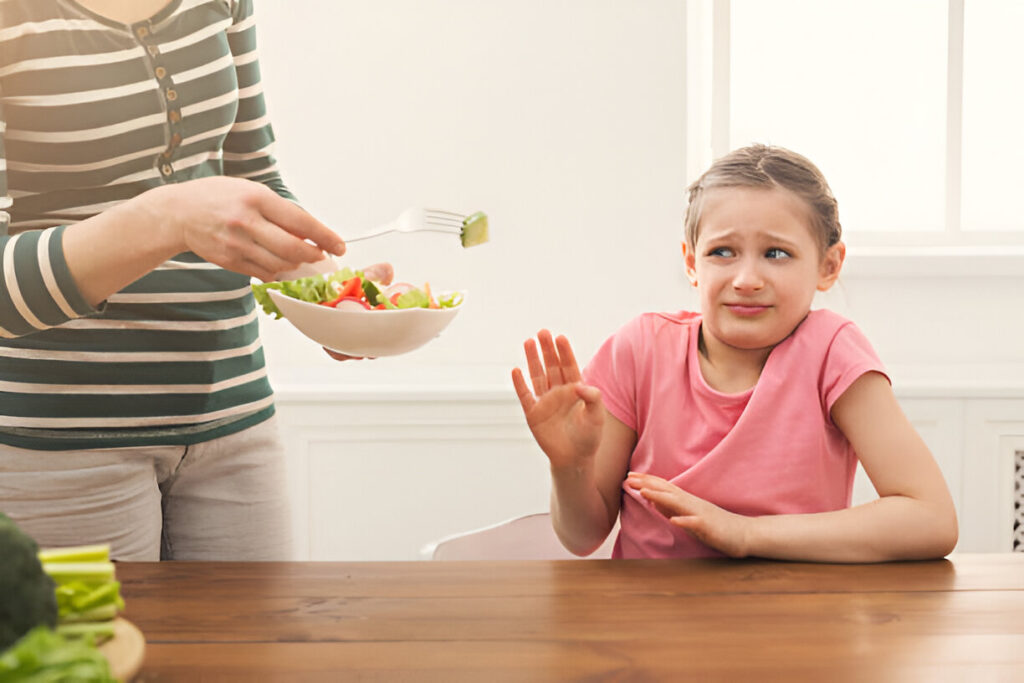
Peer Influence on Food Preferences
Food choices take different directions when people around us influence what we eat. Most people strive to belong, and food often helps kids and adults become part of social groups. Kids who bring healthy food to school may feel left out because their peers share unhealthy snacks.
Kids develop negative connections to healthy food because they believe it makes them stand out from other students. Food means more than just its taste for children; it connects them to their social group and helps them feel like part of it.
Instant Gratification from Unhealthy Snacks
Quick satisfaction from unhealthy food products drives children to continue their bad food habits. Companies immediately make junk food feel great by mixing sugar and fat with artificial flavors to bombard the brain’s reward system. Our brains connect strongly with food habits during childhood since junk food instantly creates pleasant feelings.
You need time to recognize how healthy food choices improve energy and digestion. Children naturally prefer easy pleasures because they experience things instinctively. Finding practical solutions to this issue becomes more challenging because of it.
Shaping Preferences Over Time
You can teach people how to prefer healthier choices through deliberate methods over time. Creative presentation is a great starting point. Children are more willing to taste healthy food if they see fruits and vegetables in exciting shapes and colorful displays.
Children observe and copy what their parents enjoy eating so that they adopt similar food habits. By understanding how children develop their food preferences, we find that their diet choices can evolve to include healthier selections.
3. Family action determines the foods members eat together
Impact of Family Interactions on Daily Eating Habits
Family interactions determine what food family members eat at their home while building eating habits with time. Both regular conversations and traditional practices during family meals teach children what to serve at dinner.
Family members build children’s eating habits through food practices, which explains why kids reject nutritious food. Family relationships set up an environment that makes children eat healthy food either easier or harder to do.
Teaching Food Choices Through Family Interactions
Most families use their parents as the leading figures to teach their children about food. Their ideas about acceptable foods spread to their children in hidden ways. When a parent chooses ready-made foods because they are short on time, their children naturally learn food choices should prioritize convenience over diet health.
Kids develop an aversion to healthy food because they learn to prefer sharp processed flavors over the gentler tastes of real fruits and vegetables through eating processed meals. Youngsters naturally learn to follow their parents’ habits because they watch and copy what their elders do.
Parental Influence on Children’s Food Choices
Both parents participate in discussing food and introducing dietary options to their family members for the first time. Children respond more strongly to spoken information about food even if parents don’t give direct commands.
When parents react negatively to their food, they display unconscious signals to their children about certain foods. Children hate healthy food because their natural behavior reflects what they see their parents do. A good discussion about food helps children discover new foods and choose healthfully early in life.
Food Rituals and Cultural Heritage
Family cultural routines influence what foods children eat and how they eat by strengthening the emotional value linked to specific meals. When family recipes are passed down through generations, they take on both nutritional value and emotional significance.
Families have kept their cherished family dinners for generations, but these dishes may lack proper nutrition and dietary balance. A family centers their menu on holidays and celebrations around heavy carb-heavy foods instead of adding salads or lighter options. Children resist developing good eating habits When they learn to love rich foods.
The Talk About Eating Well
Families who talk openly about food and nutrition create essential standards for how they eat as a household. Eating healthy means showing children how food choices help their bodies stay strong. Children absorb fewer eating habits and values on healthy food because family discussions about nutrition are absent.
Poor communication makes kids dislike healthy food because they don’t understand why it benefits them. Open talks about food choices help kids see why these options exist, which makes them more likely to try healthier food.

Role of Shared Family Meals
Families eating together directly influences what and how much children eat. Regular family meals make a perfect opportunity to help your kids develop healthy eating habits while they get familiar with nutritious options.
The ritual of sharing a meal with family causes people to pay more attention to their eating, yet these benefits disappear when quick meals or TV screens distract them. When healthy choices don’t appear regularly at family mealtimes, they become unfamiliar and doubtful to children.
The regular presence of odd healthy food in a child’s diet causes them to dislike it and see it as strange. When parents and children eat together, they discover how much to take at mealtime, plus taste differences and food combination rules.
Family Influence on Children’s Eating Habits
Family rules about eating behaviors strongly impact a child’s food choices. Rigid family food rules, including requiring clean plates and using dessert to reward vegetable consumption, make children dislike eating healthy.
When parents force their kids to eat nutritious foods, they resist and dislike such meals. Children who feel pressured towards eating meals start to dislike healthier food even if it benefits their health. When families let children choose and participate in picking their meals, these children become more open to eating healthier.
4. Food producers put secret ingredients in junk food to make people addicted to it
Junk Food Design and Herbalife Customers
Modern life includes junk food everywhere, from supermarkets to fast-food chains. Companies make junk food this way because they plan to produce cravings that drive people to eat more.
Manufacturers embed hidden materials to control taste perception, recruit desire, and steer consumer habits. Manufacturers build unhealthy food taste experiences with specific engineering methods that easily surpass vegetables’ basic flavors.
Craving Induction by Sugar
Companies build addiction reactions through sugar as one of their most potent business tools. Everyone knows sugar appears plainly in sweet treats, but companies hide it on food labels. Food manufacturers use names like high-fructose corn syrup, maltose, and sucrose to conceal the size of their sugar content in products.
This chemical is highly addictive because it triggers dopamine release and activates our brain’s reward system. Our brain remembers to want more sweets when we eat them because eating sugar creates this reward loop. The fast burst of flavor from junk food overwhelms lighter tastes in nutritious produce, which explains why children reject wholesome food.
Salt makes both food taste and feel better.
Salt makes junk food more addictive than healthy food. Beyond enhancing flavors, salt transforms crispy textures in snacks and distracts them from the natural taste of additives. Manufacturers find the proper harmony between salt, sugar, and fat, known as the bliss point, to make customers overeat.
Because children’s taste buds are developing their eating choices, this extreme mix makes higher demands. When fruits and veggies do not deliver taste experiences similar to unhealthy food, kids are convinced they dislike healthy options.
The Sought-After Effect of Fat on the Senses
The addiction power of junk food relies heavily on its fat content. Foods contain certain fats that help achieve better texture and more desirable tastes through trans fats. The tasty qualities of milkshakes and fried snacks result mainly from the specific fats used during preparation.
The fattiness sticks to your tongue, allowing you to want another helping immediately. Junk food feels wonderful when it first touches your tongue, but nutritious choices like vegetables and cereals won’t create that happy sensation, making children naturally resist them.
Health Impact of Artificial Flavors
Junk food addiction also results from artificial flavors that most consumers don’t realize have power over their cravings. Manufacturers create synthetic compounds that enhance natural flavors until the senses can no longer handle them.
Many chips and candies, through artificial cheese and fruit flavorings, surpass the natural food they try to replicate. Certain food ingredients deceive your brain into thinking excessive flavors create satisfaction and joy, so regular meals taste ordinary. Tiny, healthy food flavors cannot match artificial tastes, so kids naturally avoid them.
Visual Appeal of Artificial Food Colors
Artificial colors help junk food appeal to our behaviors and taste choices. Processed food colors make healthier items look less attractive, as the artificial dyes transform plain crackers into orange snack packages and change liquid sugar into colorful drinks.
Regular food becomes less appealing to children since bright colors symbolize playtime, joy, and treats. Nature provides healthful foods primarily in earth tones with muted green, brown, and yellow breakdown. Kids strongly dislike healthy food because it fails to create the fascinating visual appeal that junk food offers.

Health Risks of Food Additives
The secret ingredients in junk food affect our senses and our health. High levels of sugar, salt, and fat trigger cravings that make the brain react like a drug addict.
Kids eating junk food frequently want more significant portions for the same pleasure. Children dislike nutritious foods because healthy meals contain no ingredients that make junk food exciting to them.
Emotional Connections in Advertising Techniques
Our fascination with junk food grows more substantial because of its emotional satisfaction. Manufacturers make their products seem happy and enjoyable by advertising with fun sounds and characters on exciting packaging.
Children have sensitive minds that quickly establish strong emotional ties to junk food. Young consumers automatically reject nutritious foods because marketing campaigns try to make junk food look more exciting. Weak emotional attachments to natural foods contribute to why kids reject healthy eating.
5. Most parents find it hard to teach healthy food habits successfully
Overcoming Family Nutrition Challenges
Many parents find it hard to train their children toward better eating habits. Many parents notice when they try but fail to teach their children to pick healthier food options. Several complex reasons push kids away from healthy food, including taste management preferences, marketing forces, social pressures, and strong instinctive dislikes.
Bringing nutritious foods into the diet is a constant fight against dietary resistance. To succeed in food education, you must first recognize the difficulties and develop effective ways to handle them.
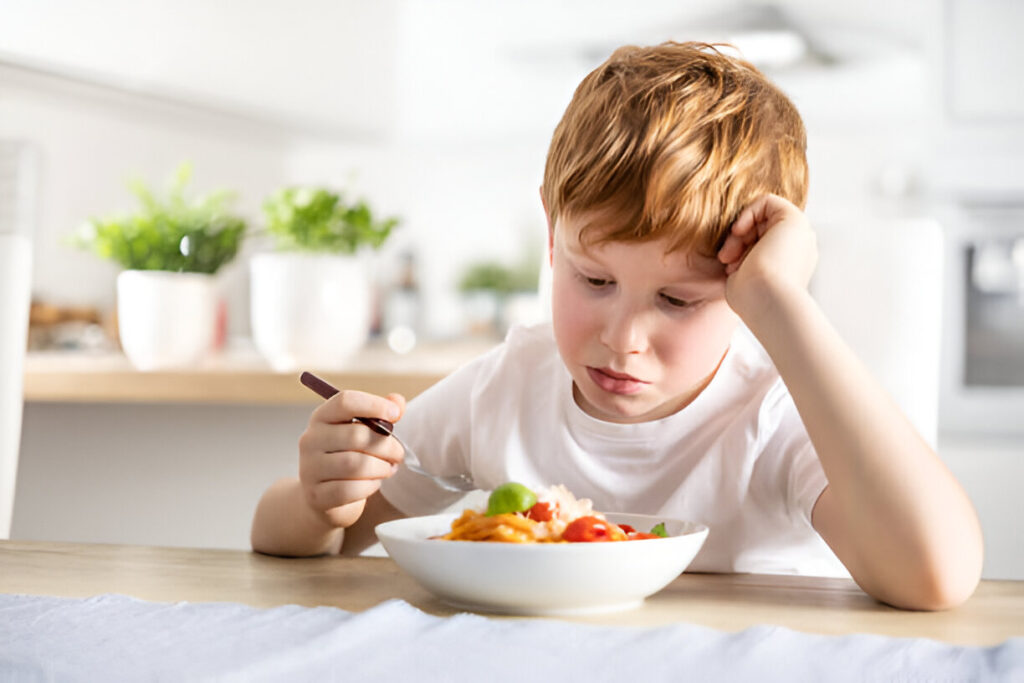
Evolution of Human Taste and Food Rejection
Parents struggle most with their children being more responsive to specific flavors in their food. Children detect bitter and earthy food tastes with extreme sensitivity, making these flavors hard to tolerate. Food habits show that children strongly dislike eating broccoli, spinach, and Brussels sprouts. Researchers link this instinctive dislike to our ancient evolutionary past.
To early humans, bitter tastes signified dangerous plants, which protected their survival. Children reject healthy food because their senses perceive bitter tastes in the nutritious items they need to eat daily. Our evolutionary natural responses create an undesired conflict between child food preferences and parent dietary goals.
Food Marketing’s Impact on Kids’ Choices
Parents strive to stay ahead of massive advertising campaigns for food companies. Food companies use attention-getting packaging designs and cool characters to trick young customers into wanting junk food. Companies purposefully create food products that make kids develop strong emotional relationships with high-sugar cereals, chips, and colorful candies.
Healthy food brands fail to get attractive promotional treatment like junk food brands. A basic steamed vegetable serving loses instantly to the flashy display of frosted donuts and gummy bears. The substantial difference in appearance between junk food and healthy food makes kids strongly favor unhealthy food over nutritious options.
Unexpected Issues from Parental Food Strategies
When parents employ these methods, they accidentally make their children dislike healthy food more. Parents often establish intense food confines, which state, “You can’t enjoy your dessert before meal completion” and “You have to eat all plate contents to leave the table.
” Food restrictions meant to promote healthy eating make eating healthier a negative experience. When kids must eat vegetables under adverse conditions, they learn to dislike these foods rather than finding interest or pleasure in experiencing them. The effort’s side effects hurt our intentions when building healthy eating habits.
Peer Influence on Group Behavior
Food selection depends heavily on the social environment but mainly affects young students in school. Their friends’ food choices and what others think about food strongly affect their food decisions. A child who brings homemade carrot sticks and hummus will feel different when all their classmates eat chips and cookies.
Children need to belong socially, and when different lunch options stand out, they stop trying new healthy foods. Social pressure creates a third reason why kids reject healthy food since their acceptance by friends depends on their food choices.
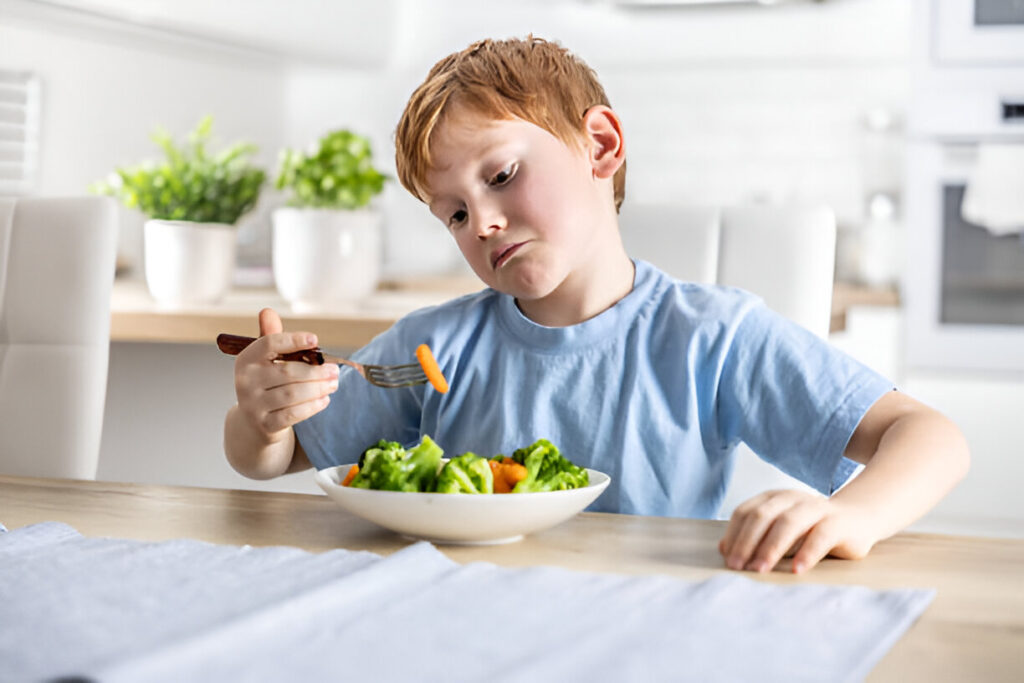
People get fast satisfaction from eating junk food.
Parents often struggle most when foods that provide pleasure instantly catch their children’s attention. You experience pleasure right after eating junk food. Eating chips produces a dopamine response inside the brain, while sugary desserts or carbonated drinks do the same. Children who eat healthy foods slowly discover health benefits through good digestion or better energy levels.
Children naturally make snap decisions because of their thought processes, so they strongly dislike nutritious food. When parents offer wholesome food products instead of simple snacks, people get pleasure quicker than they would from nutritious diet choices.
The Importance of Patience and Persistence
At the heart of this challenge is patience. Healthy eating behavior cannot be developed immediately. Children develop food choices through years of touchpoints with different setups and lifestyles.
Parents must stay dedicated to finding other ways to overcome this issue while understanding their child’s preferences. When a meal strategy does not work, We must adapt our methods to success. Building a healthier diet brings consistent results that help our eating habits develop better with time.
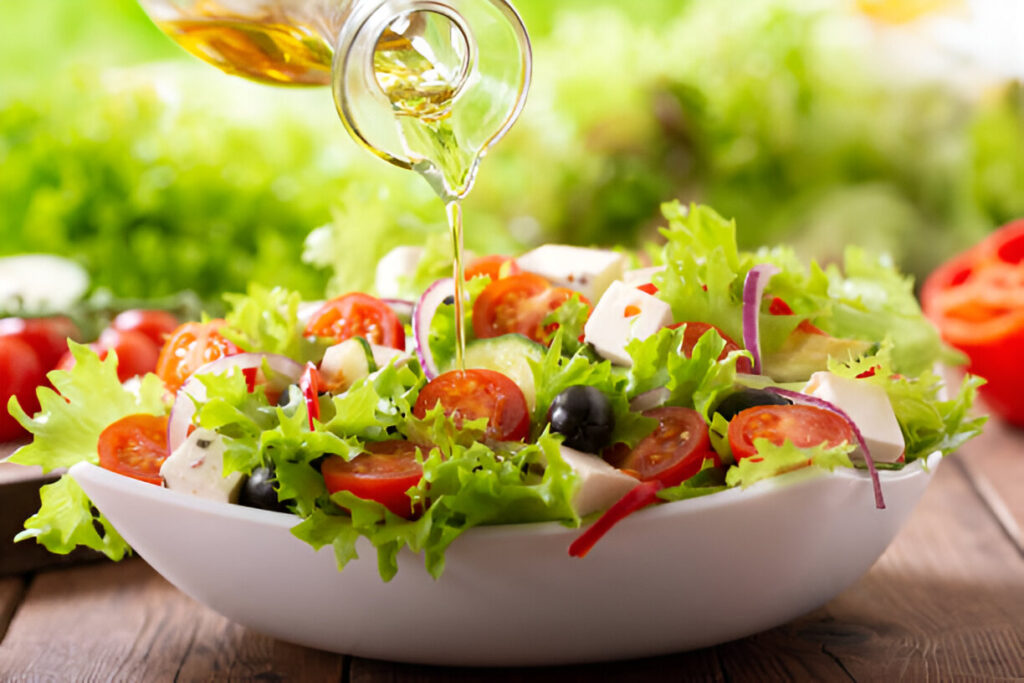
Rebuilding Relationships with Food
Parents’ tough battles to foster healthy diets highlight the surroundings their children experience. Children learn their eating preferences through constant exposure to media content and social situations during lunch at school. Through consistent effort and flexibility, parents can teach their children to enjoy nutritious food, so they overcome mealtime resistance.
Beyond improving eating habits, healthy food education helps children develop emotionally while learning to adjust and explore new experiences. Parents who take charge of these issues will build essential wellness habits that benefit their children today and adulthood.
6. You Can Get People to Eat Healthy Food Better Through Special Cooking Styles
Innovative Cooking Changes Views on Healthy Food
You don’t need to make healthy eating bland and tasteless. Proper methods allow you to turn essential healthy ingredients into delicious meals that benefit your health. Creative cooking methods help you create new ways to eat healthy food that even children dislike will find tasty. You can create new nutritional excellence by trying different ways to mix and display flavor and texture in your food.
Spice ingredients help food taste better
Using spices helps make healthy food more appetizing through their natural flavor abilities. The spices in food deliver rich tastes to every ingredient they touch. A small pinch of smoked paprika turns ordinary roasted vegetables into something special, just as a dash of cumin transforms plain lentil soup.
Turmeric helps enhance meal appearance through its yellow color and gives it more profound warmth. Using multiple preparation methods lets you customize your food according to your preferences while keeping nutritious ingredients the backbone of your meals.
Unique Techniques for Better Cooking Results
Different ways to cook food will make it taste better to your senses. When steamed, vegetables stay sweet and retain more nutrients but gain a mouthwatering grilled, smoky taste. When you roast sweet potatoes or cauliflower, their natural edges turn sweet and crisp.
To make healthy food spectacular, we apply special cooking strategies that deliver restaurant quality tastes. The way food is prepared creates more than just a meal; it creates an entire dining experience.
Winning Flavors with Two Ingredients
Nutritious meals taste best if you use the correct taste combinations. Combining tart with sweet or spicy with salty produces meals that feel complete and delicious. People who dislike Brussels sprouts will change their minds after trying this roasted vegetable mixture with balsamic vinegar and honey.
Healthful cooking approaches help people find pleasure in nutritious eating. Combining opposite taste sensations creates dishes that give each bite maximum flavor experience.
The Importance of Texture
The sensation we feel while eating matters when we judge food. Toasting nuts or seeds creates a stimulating texture that helps food look and taste better. Greek yogurt and avocado slices make meals richer and smoother to eat.
Experts build healthy meals by combining different textures through innovative cooking methods so these foods provide full sensory enjoyment. How food feels on your tongue decides if it will bring you enjoyment more than taste alone.
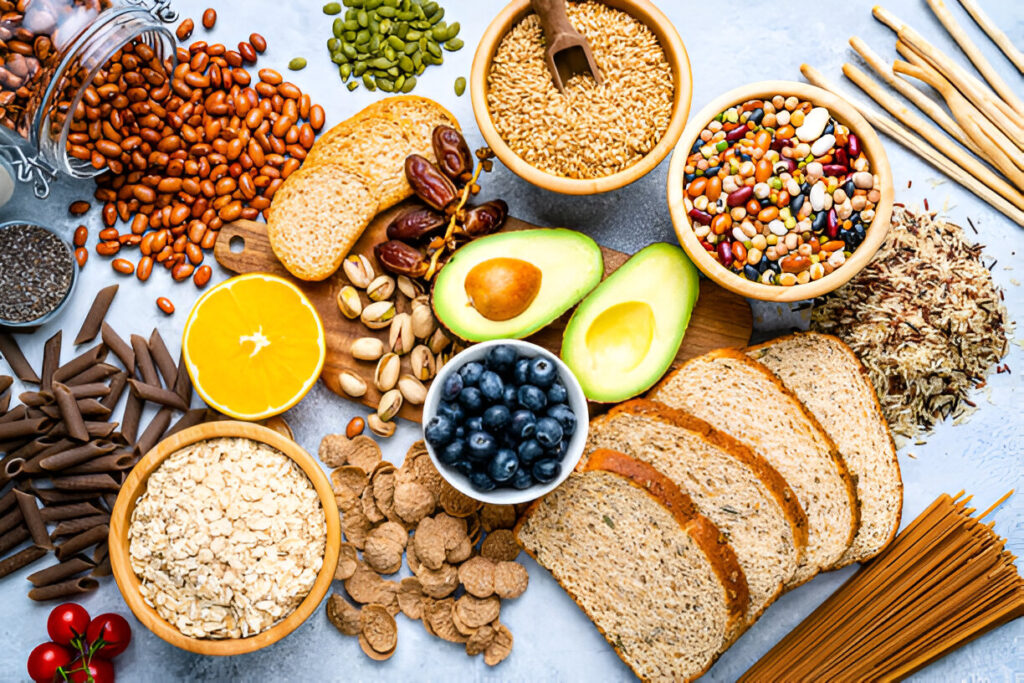
Creating Attractive Healthy Plates
Our eyes usually decide what food to eat before we taste it, which is an exceptionally healthy option. Beautiful meals will get people to try them right away. The bright appearance of living produce or carefully arranged cut fruits attracts people more to healthy meals.
Creative kitchen methods, including spiralizing zucchini and preparing salads in mason jars, make nutritious food appear enjoyable alongside its great taste. Dressing up healthy foods can make eating well more satisfying than work.
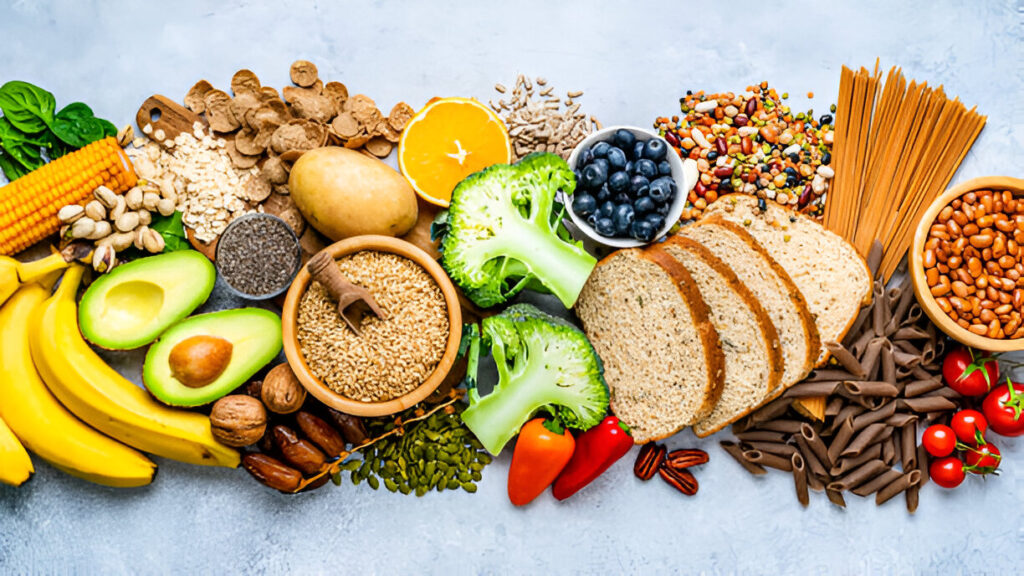
Healthier Ingredients for Nutritious Meals
You can replace unhealthy ingredients with better alternatives while preparing your meals. People use cauliflower rice as a rice replacement, while mashed avocados work well as an alternative to mayo in spreads and dips.
Instead of traditional pasta, you can make it from chickpeas, zucchini, or lentils. Cooking experts use new preparation methods to transform familiar recipes without changing their basic taste. These replacements bring delicious meals back on the table without adding weight to our diet.
7. Effective educational games stimulate your child’s interest in making smart nutritional choices
Interactive Food Learning for Better Nutrition
Teaching children to love healthy food becomes easier when you let them explore and create with food. Interactive food teaching lets kids experience nutritious foods through fun, active learning.
Children discover nutrition through games that make learning about and trying new food exciting instead of demanding. Children who participate in learning activities discover that vegetables become more interesting.
Food Lessons to Uncover Culinary Skills
Children learn better nutritional habits when we teach them how to cook through formal cooking lessons—children who learn to make their food feel proud and responsible for their diet. Children discover healthy eating when they help make food, like creating pizza crusts or mixing smoothie ingredients.
When kids learn food preparation by doing, they take ownership of their nutritious creations and naturally want to savor their culinary achievements. When children participate in preparing their meals, they quickly become invested in what they eat.
Gardening to Guide Youth in Food Choices
Seeded garden plots teach children about healthy food origins in an exciting learning format. Children develop responsibility and excitement when they watch plants like vegetables, herbs, or fruits grow.
They begin to value the nutrition in their food because they learn about how long it takes to grow natural ingredients. When children participate in garden interactive food lessons, they learn firsthand about nature and the food cycle, which makes them more eager to taste what they helped create.

Turning Healthy Food into Art
Through food art, you can make healthy eating fun and creative for everyone. When you let children use their imaginations at mealtime, they will love creating colorful food pictures from fresh produce and healthy ingredients. Children can use carrots to make flower designs and strawberries and blueberries to create beautiful rainbows.
Music and food education help children learn healthy meals by seeing their food as exciting design projects. Children will be more willing to take food risks when they enjoy trying activities together.
Digital Tools for Healthy Living Education
Tech-savvy kids’ devices push them into new food experiences through healthy apps and games. Digital educational platforms teach users about food preparation while introducing them to farming and meal-planning methods through active participation.
When they take part in these teaching technologies, children discover basic nutrition knowledge through engaging digital platforms. Our interactive food education method joins digital fun with valuable understanding to teach children better health.

Teamwork builds through collective group projects.
Teaching healthy eating habits to children through group activities shows them it works better when they eat together than alone. Have your students compete against their family members or classmates by making nutritious food during a cooking competition.
The students grow closer to each other when they see their classmates succeed at the activities. When class members learn how to prepare meals together, they discover that healthy eating produces positive experiences they want to share with others.
Students Discover Food Through Scientific Study
Science excites young students, and cooking is a perfect way to try new things. Children can learn about science topics by observing the rise of baking soda bubbles in homemade yogurt during whole-grain pancake preparation and witnessing fruit changes after heating.
When students test out food preparation steps, they discover the scientific side of cooking while creating meals. When children interactively experience food education, they become more interested in learning and better understand nutritious food options.
Interactive Food Education for Lasting Nutrition Habits
Learning activities that teach children good eating habits will benefit their lives at every stage. Through interactive food education, young minds discover new things while gaining self-discipline and problem-solving skills they can use everywhere.
Food empowerment for children becomes a lasting behavior that guides them toward healthier life decisions as adults. Children develop a better food connection when participating in enjoyable activities related to healthy eating.

Fun Food Education for Healthier Kids
Teaching youngsters to enjoy healthy eating involves more than setting rules or sticking to simple meals. Helping children enjoy their food becomes possible by designing activities that create enjoyment and develop inquisitiveness about nutrition and food handling.
Kids discover healthy food more efficiently through hands-on experiences like gardening, farm activities, or learning with their taste buds. Children will develop healthy eating habits when they learn about and enjoy healthy food.
Why Don’t Kids Like Vegetables
Kids probably dislike vegetables based more on taste, texture or familiarity. Many vegetables are bitter or have a fibrous texture, which many young taste buds are not pleased by. Others may enjoy vegetables they never saw (or if they did, saw them once, at a grown-up party they were too young to attend serving.
I don’t know, raw broccoli?) Over time, as kids learn to appreciate food, their tastes can change, mainly if they are used to creative preparations (like pureed vegetables my son is now using to re-create the full flavor profiles of his favorite comfort foods, but only so he can eat that food instead of just rice or pasta).
<script type="application/ld+json">
{
"@context": "https://schema.org",
"@type": "Article",
"mainEntityOfPage": {
"@type": "WebPage",
"@id": "https://skyhealthnews.com/why-kids-hate-healthy-food/"
},
"headline": "Why Kids Hate Healthy Food",
"description": "Why Kids Hate Healthy Food how nutrition affects kids' behavior and influences what they eat and think about eating.",
"image": "https://skyhealthnews.com/wp-content/uploads/2025/01/why-kids-hate-healthy-food-1024x683.jpg",
"author": {
"@type": "Person",
"name": "Farhad",
"url": "https://skyhealthnews.com/author/farhad"
},
"publisher": {
"@type": "Organization",
"name": "",
"logo": {
"@type": "ImageObject",
"url": ""
}
},
"datePublished": "2025-01-23"
}
</script>